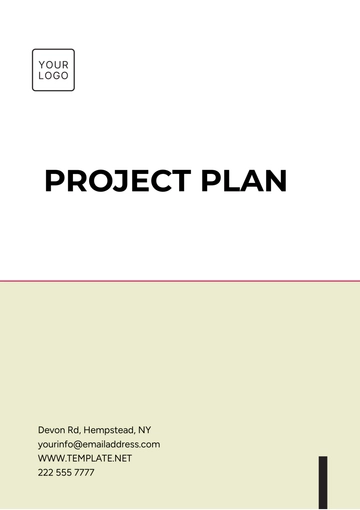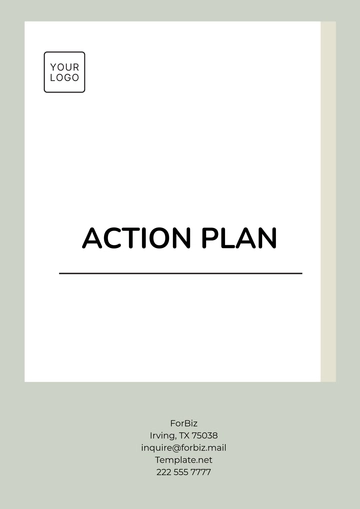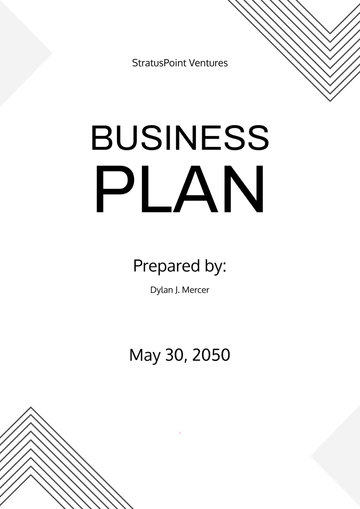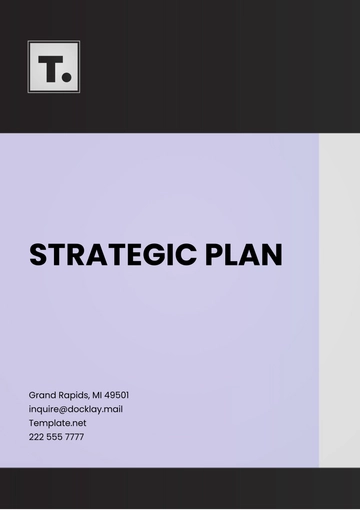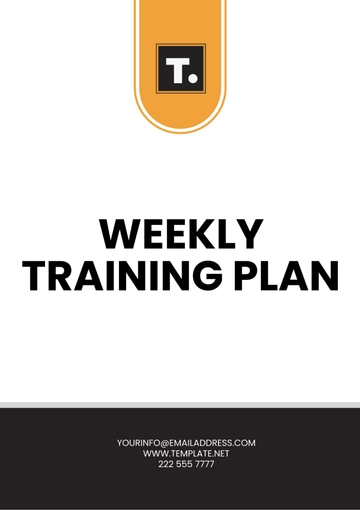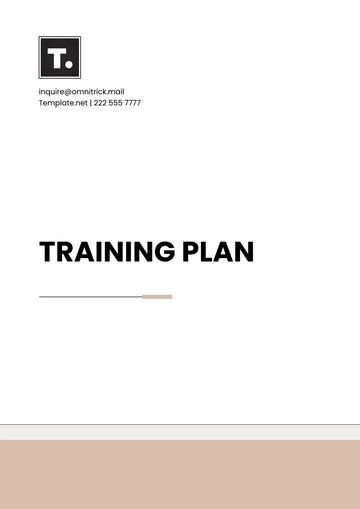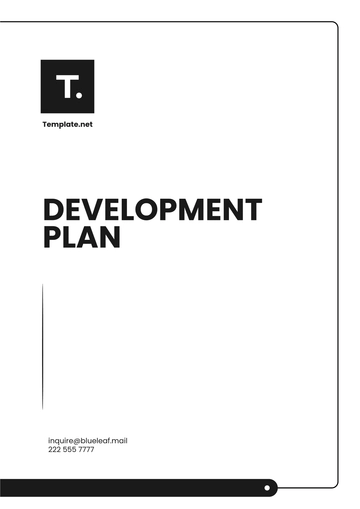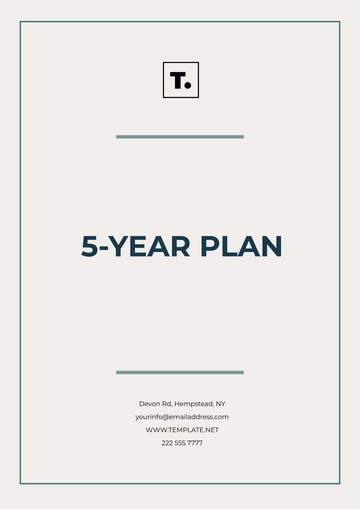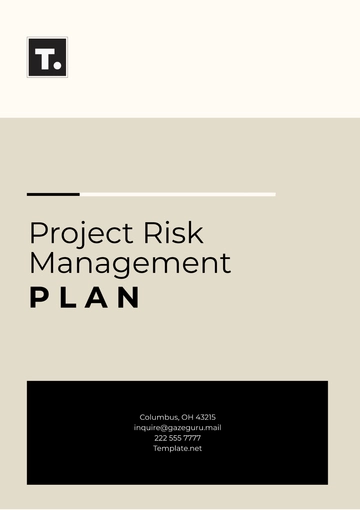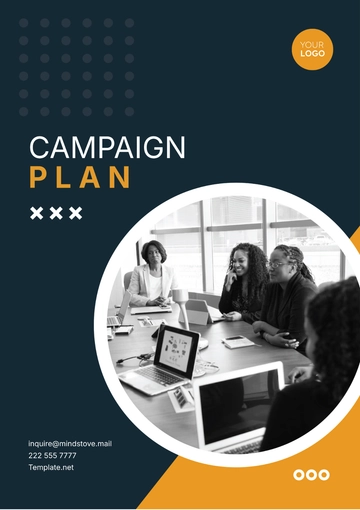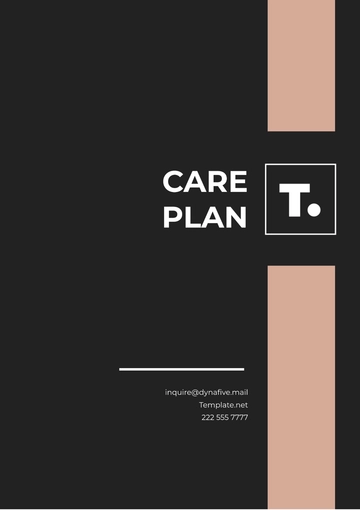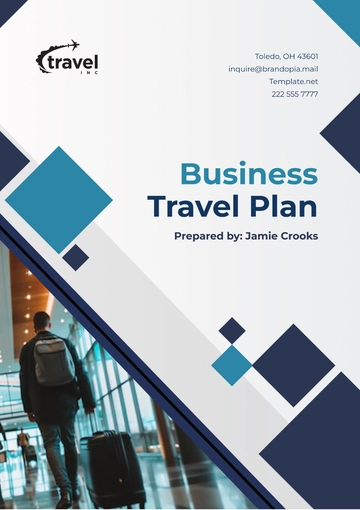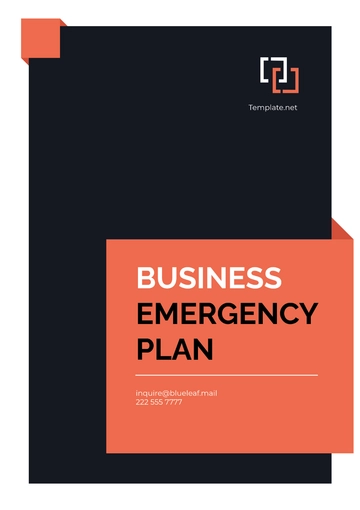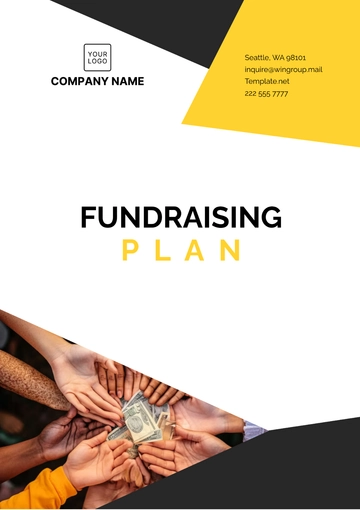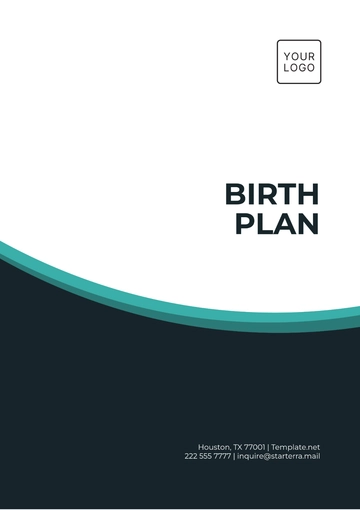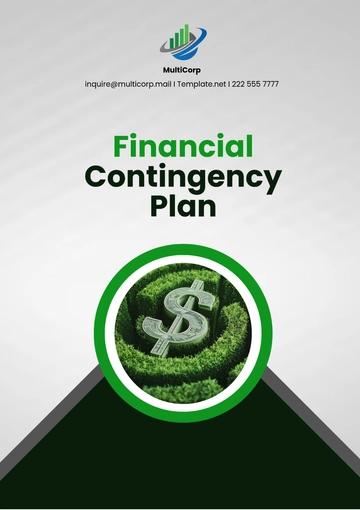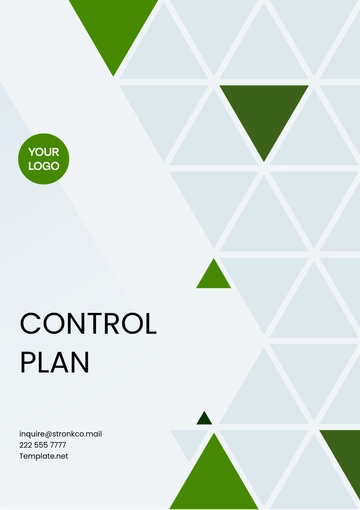Free Project Procurement Plan

1. Introduction
1.1 Purpose
The purpose of this Project Procurement Plan is to detail the procurement strategy for [Your Company Name] as it embarks on new and ongoing projects from 2050 and beyond. The plan aims to provide a comprehensive and structured approach for acquiring the necessary goods and services. This approach ensures that procurement activities are conducted with efficiency, fairness, and transparency, which supports the overall success and objectives of the projects. By establishing clear guidelines and procedures, the plan seeks to optimize the procurement process, reduce risks, and achieve the best possible outcomes for the organization.
1.2 Scope
This procurement plan is applicable to all projects undertaken by [Your Company Name] starting from the year 2050. It encompasses the entire procurement lifecycle, including the identification of procurement needs, vendor selection, contract management, and performance monitoring. The scope of this plan covers:
Acquisition of materials, services, and supplies essential for project execution.
Procedures for developing procurement documents, such as Requests for Proposals (RFPs) and Requests for Quotes (RFQs).
Processes for evaluating and selecting vendors, negotiating contracts, and managing contract performance.
Methods for ensuring compliance with legal, regulatory, and organizational requirements.
1.3 Objectives
The objectives of this Project Procurement Plan include:
Establishing a Clear Procurement Process: To define a systematic approach for identifying, acquiring, and managing the necessary goods and services for each project.
Aligning Procurement with Project Timelines and Budget: To ensure that procurement activities are completed within the project schedule and budget constraints.
Effective Risk Management: To identify, assess, and mitigate risks associated with procurement activities, ensuring that potential issues are addressed proactively.
Promoting Transparency and Fairness: To foster an open and competitive procurement environment, ensuring that all vendors are treated equitably and that the procurement process is transparent.
Ensuring Compliance: To adhere to all relevant legal, regulatory, and organizational standards and guidelines throughout the procurement process.
2. Procurement Planning
2.1 Procurement Needs Analysis
2.1.1 Identification of Requirements
The identification of procurement needs is a critical first step in the planning process. This involves:
Analyzing Project Scope: Review the project scope and objectives to determine specific requirements for goods and services. This analysis includes evaluating project deliverables and identifying any special requirements or constraints.
Consulting Stakeholders: Engage with project stakeholders, including team members, end-users, and sponsors, to gather input on their needs and expectations. This collaboration ensures that all necessary requirements are captured and considered.
Developing Specifications: Create detailed specifications and performance criteria for each procurement item. Specifications should be clear, precise, and aligned with project objectives to ensure that the procured items meet the required quality and functionality.
2.1.2 Budget Allocation
Effective budget allocation is essential for managing procurement costs. This process includes:
Cost Estimation: Estimate the cost of each procurement item based on market research, historical data, and supplier quotations. This estimate should consider all relevant factors, including material costs, labor, and overheads.
Allocating Funds: Allocate funds in the project budget specifically for procurement activities. Ensure that the allocated amount is sufficient to cover the estimated costs and any potential contingencies.
Aligning with Project Budget: Ensure that the procurement budget aligns with the overall project budget. Monitor and adjust allocations as needed to maintain budgetary control and prevent cost overruns.
2.2 Procurement Strategy
2.2.1 Sourcing Strategy
The sourcing strategy defines how [Your Company Name] will approach the market to obtain the necessary goods and services. This includes:
Single-Source vs. Multiple-Source: Decide whether to procure from a single source or multiple sources. Single-source procurement may be used for specialized items or when a particular vendor offers unique advantages, while multiple-source procurement can enhance competition and reduce dependency on a single supplier.
Make-or-Buy Decisions: Evaluate whether to produce goods or services in-house or purchase them from external vendors. Consider factors such as cost, capability, and strategic alignment when making this decision.
Identifying Potential Suppliers: Research and identify potential suppliers based on their capabilities, reputation, and past performance. Consider factors such as supplier reliability, financial stability, and capacity to meet project requirements.
2.2.2 Contract Types
Selecting the appropriate contract type is crucial for managing procurement risks and ensuring value for money. Common contract types include:
Fixed-Price Contracts: Suitable for well-defined requirements with minimal risk of changes. The price is agreed upon upfront, providing cost certainty for both parties.
Cost-Reimbursable Contracts: Used when the scope of work is uncertain or likely to change. The buyer reimburses the seller for allowable costs plus an additional fee, with costs and risks shared between parties.
Time and Materials Contracts: Ideal for projects with undefined scopes or where work is performed on a time basis. The buyer pays for the time spent and materials used, with flexibility to accommodate changes.
2.3 Procurement Schedule
2.3.1 Timeline Development
Developing a detailed procurement timeline ensures that procurement activities are completed on schedule. The timeline includes:
Document Preparation: Timeframes for preparing procurement documents, such as RFPs, RFQs, and contracts.
Issuance and Submission: Dates for issuing procurement documents, receiving proposals or quotes, and closing submission periods.
Evaluation and Selection: Timelines for evaluating proposals, conducting vendor interviews or presentations, and selecting the preferred vendor.
2.3.2 Milestones and Deadlines
Key milestones and deadlines in the procurement process include:
Proposal Submission Deadlines: Establish deadlines for vendors to submit their proposals or bids. Ensure that these deadlines provide adequate time for thorough preparation and submission.
Vendor Selection Date: Set a date for finalizing the vendor selection process, including evaluating proposals and making a decision.
Contract Award Date: Specify the date for awarding the contract and completing the formal contract execution process.
3. Vendor Selection
3.1 Prequalification of Vendors
3.1.1 Vendor Research
Prequalification involves researching and assessing potential vendors to ensure they meet the required criteria. This process includes:
Vendor Capabilities and Experience: Review the capabilities, experience, and track record of potential vendors. Assess their ability to meet project requirements and deliver high-quality goods or services.
Financial Stability: Evaluate the financial stability of vendors to ensure they can fulfill contractual obligations. Review financial statements, credit ratings, and other relevant financial information.
References and Past Performance: Check references and past performance records to gain insights into the vendor’s reliability and performance on similar projects.
3.1.2 Request for Information (RFI)
An RFI is issued to gather preliminary information from potential vendors. This document typically includes:
Project Description: A summary of the project and its objectives to provide context for the vendors.
Vendor Questions: A series of questions about the vendor’s capabilities, qualifications, and approach to meeting project requirements.
Response Deadline: A deadline for vendors to submit their responses to the RFI.
3.2 Request for Proposal (RFP)
3.2.1 RFP Preparation
The RFP is a formal document issued to solicit proposals from vendors. It includes:
Project Requirements and Scope: Detailed information about the project’s requirements, scope, and objectives. This ensures that vendors have a clear understanding of what is needed.
Evaluation Criteria: Criteria and weighting used to evaluate proposals. This may include factors such as technical capability, cost, experience, and delivery timelines.
Submission Instructions: Instructions for vendors on how to submit their proposals, including format, submission method, and deadline.
3.2.2 Evaluation and Scoring
Vendor proposals are evaluated based on predefined criteria. This involves:
Scoring Proposals: Assign scores to proposals according to the evaluation criteria. Consider both technical and financial aspects to determine the overall value offered by each vendor.
Interviews and Presentations: Conduct interviews or presentations if necessary to gain further insights into vendor proposals and clarify any questions.
Vendor Selection: Select the highest-scoring vendor(s) for further negotiation and potential contract award.
3.3 Contract Negotiation and Award
3.3.1 Negotiation Process
Contract negotiation involves:
Discussing Terms and Conditions: Engage in discussions with the selected vendor to agree on contract terms, including price, delivery schedules, performance metrics, and other relevant conditions.
Addressing Issues: Resolve any issues or concerns identified during the evaluation phase. Ensure that both parties reach a mutually acceptable agreement.
Finalizing Contract Terms: Confirm and finalize all contract terms and conditions before proceeding to contract award.
3.3.2 Contract Award
The contract is awarded once negotiations are complete. This process includes:
Award Letter: Issue a formal contract award letter to the selected vendor, notifying them of their successful bid.
Contract Execution: Obtain signatures from both parties to formalize the contract. Ensure that all legal and administrative requirements are met.
Communication: Communicate the award decision to unsuccessful bidders and provide feedback if appropriate.
4. Contract Management
4.1 Contract Administration
4.1.1 Performance Monitoring
Monitoring vendor performance ensures that contractual obligations are met. This includes:
Progress Reviews: Regularly review progress reports and performance metrics provided by the vendor. Compare actual performance against contractual requirements and project goals.
Site Visits: Conduct site visits or inspections, if applicable, to verify that work is being performed according to contract specifications.
Issue Resolution: Address any performance issues or deviations from the contract promptly. Work with the vendor to resolve issues and implement corrective actions if necessary.
4.1.2 Change Management
Managing changes to the contract involves:
Change Requests: Process change requests submitted by either party. Evaluate the impact of proposed changes on project scope, cost, and schedule.
Change Orders: Issue formal change orders to amend the contract. Ensure that changes are documented, agreed upon, and signed by both parties.
Impact Analysis: Analyze the impact of changes on project objectives and make necessary adjustments to the procurement plan.
4.2 Performance Evaluation
4.2.1 Vendor Evaluation
Evaluate vendor performance at regular intervals. This evaluation includes:
Performance Metrics: Assess performance based on predefined metrics, such as quality, timeliness, and adherence to contract terms.
Feedback Collection: Gather feedback from project team members and stakeholders regarding the vendor’s performance and delivery.
Performance Reports: Prepare and review performance reports to identify areas for improvement and to recognize exceptional performance.
4.2.2 Lessons Learned
Conduct a lessons learned review at the end of the project or contract. This involves:
Identifying Successes and Challenges: Document successes and challenges encountered during the procurement process and contract management.
Recommendations: Provide recommendations for improving future procurement activities and contract management practices.
Sharing Knowledge: Share lessons learned with relevant stakeholders to enhance organizational knowledge and procurement practices.
5. Risk Management
5.1 Risk Identification
5.1.1 Risk Identification Methods
Identify potential risks associated with procurement activities using various methods:
Brainstorming: Engage project team members and stakeholders in brainstorming sessions to identify potential risks.
Historical Data Analysis: Review historical data and past experiences to identify risks that have occurred in similar projects.
Risk Checklists: Utilize risk checklists to ensure that common risks are considered and addressed.
5.1.2 Risk Register
Maintain a risk register to document identified risks. This register includes:
Risk Description: A detailed description of each identified risk.
Risk Impact: Assessment of the potential impact of each risk on project objectives.
Risk Probability: Evaluation of the likelihood of each risk occurring.
Mitigation Strategies: Strategies and actions to mitigate or manage each identified risk.
5.2 Risk Mitigation
5.2.1 Risk Mitigation Strategies
Develop and implement strategies to mitigate identified risks. This includes:
Preventive Actions: Implement actions to prevent risks from occurring or to reduce their likelihood.
Contingency Plans: Develop contingency plans to address risks if they materialize. Ensure that these plans are actionable and effective.
Monitoring and Review: Continuously monitor risks and review mitigation strategies. Adjust plans and actions as necessary based on changes in risk conditions.
5.2.2 Risk Communication
Effective communication is essential for managing procurement risks. This involves:
Stakeholder Communication: Keep stakeholders informed about risk status, mitigation efforts, and any changes in risk conditions.
Reporting: Provide regular risk reports to project sponsors and other relevant parties. Ensure that reports are clear, concise, and actionable.
6. Compliance and Reporting
6.1 Legal and Regulatory Compliance
6.1.1 Compliance Requirements
Ensure that procurement activities comply with all relevant legal and regulatory requirements. This includes:
Local, State, and Federal Laws: Adhere to laws and regulations governing procurement practices, including bidding, contract management, and reporting.
Industry Standards: Follow industry standards and best practices related to procurement and contract management.
Organizational Policies: Comply with organizational policies and procedures regarding procurement and vendor management.
6.1.2 Documentation and Record Keeping
Maintain accurate documentation and records for all procurement activities. This includes:
Procurement Documents: Keep copies of procurement documents, including RFPs, RFQs, contracts, and change orders.
Communication Records: Document all communications with vendors, including emails, meeting minutes, and correspondence.
Performance Records: Maintain records of vendor performance evaluations, risk assessments, and issue resolutions.
6.2 Reporting and Accountability
6.2.1 Procurement Reporting
Prepare and submit procurement reports as required. This includes:
Progress Reports: Provide regular updates on procurement activities, including status, issues, and accomplishments.
Financial Reports: Report on procurement expenditures, including costs incurred, budget variances, and financial performance.
Compliance Reports: Document compliance with legal, regulatory, and organizational requirements.
6.2.2 Accountability and Oversight
Ensure accountability and oversight of procurement activities. This involves:
Roles and Responsibilities: Define roles and responsibilities for procurement team members and stakeholders.
Audit and Review: Conduct audits and reviews of procurement processes and practices to ensure compliance and effectiveness.
Corrective Actions: Implement corrective actions to address any issues or deficiencies identified during audits or reviews.
- 100% Customizable, free editor
- Access 1 Million+ Templates, photo’s & graphics
- Download or share as a template
- Click and replace photos, graphics, text, backgrounds
- Resize, crop, AI write & more
- Access advanced editor
Plan and manage project purchases efficiently with the Project Procurement Plan Template available on Template.net. This editable template outlines procurement strategies, supplier selection, and contract management processes, ensuring timely delivery of project resources. Editable in our AI Editor Tool, it guarantees smooth procurement operations. Download now to optimize your procurement strategy!
You may also like
- Finance Plan
- Construction Plan
- Sales Plan
- Development Plan
- Career Plan
- Budget Plan
- HR Plan
- Education Plan
- Transition Plan
- Work Plan
- Training Plan
- Communication Plan
- Operation Plan
- Health And Safety Plan
- Strategy Plan
- Professional Development Plan
- Advertising Plan
- Risk Management Plan
- Restaurant Plan
- School Plan
- Nursing Home Patient Care Plan
- Nursing Care Plan
- Plan Event
- Startup Plan
- Social Media Plan
- Staffing Plan
- Annual Plan
- Content Plan
- Payment Plan
- Implementation Plan
- Hotel Plan
- Workout Plan
- Accounting Plan
- Campaign Plan
- Essay Plan
- 30 60 90 Day Plan
- Research Plan
- Recruitment Plan
- 90 Day Plan
- Quarterly Plan
- Emergency Plan
- 5 Year Plan
- Gym Plan
- Personal Plan
- IT and Software Plan
- Treatment Plan
- Real Estate Plan
- Law Firm Plan
- Healthcare Plan
- Improvement Plan
- Media Plan
- 5 Year Business Plan
- Learning Plan
- Marketing Campaign Plan
- Travel Agency Plan
- Cleaning Services Plan
- Interior Design Plan
- Performance Plan
- PR Plan
- Birth Plan
- Life Plan
- SEO Plan
- Disaster Recovery Plan
- Continuity Plan
- Launch Plan
- Legal Plan
- Behavior Plan
- Performance Improvement Plan
- Salon Plan
- Security Plan
- Security Management Plan
- Employee Development Plan
- Quality Plan
- Service Improvement Plan
- Growth Plan
- Incident Response Plan
- Basketball Plan
- Emergency Action Plan
- Product Launch Plan
- Spa Plan
- Employee Training Plan
- Data Analysis Plan
- Employee Action Plan
- Territory Plan
- Audit Plan
- Classroom Plan
- Activity Plan
- Parenting Plan
- Care Plan
- Project Execution Plan
- Exercise Plan
- Internship Plan
- Software Development Plan
- Continuous Improvement Plan
- Leave Plan
- 90 Day Sales Plan
- Advertising Agency Plan
- Employee Transition Plan
- Smart Action Plan
- Workplace Safety Plan
- Behavior Change Plan
- Contingency Plan
- Continuity of Operations Plan
- Health Plan
- Quality Control Plan
- Self Plan
- Sports Development Plan
- Change Management Plan
- Ecommerce Plan
- Personal Financial Plan
- Process Improvement Plan
- 30-60-90 Day Sales Plan
- Crisis Management Plan
- Engagement Plan
- Execution Plan
- Pandemic Plan
- Quality Assurance Plan
- Service Continuity Plan
- Agile Project Plan
- Fundraising Plan
- Job Transition Plan
- Asset Maintenance Plan
- Maintenance Plan
- Software Test Plan
- Staff Training and Development Plan
- 3 Year Plan
- Brand Activation Plan
- Release Plan
- Resource Plan
- Risk Mitigation Plan
- Teacher Plan
- 30 60 90 Day Plan for New Manager
- Food Safety Plan
- Food Truck Plan
- Hiring Plan
- Quality Management Plan
- Wellness Plan
- Behavior Intervention Plan
- Bonus Plan
- Investment Plan
- Maternity Leave Plan
- Pandemic Response Plan
- Succession Planning
- Coaching Plan
- Configuration Management Plan
- Remote Work Plan
- Self Care Plan
- Teaching Plan
- 100-Day Plan
- HACCP Plan
- Student Plan
- Sustainability Plan
- 30 60 90 Day Plan for Interview
- Access Plan
- Site Specific Safety Plan
